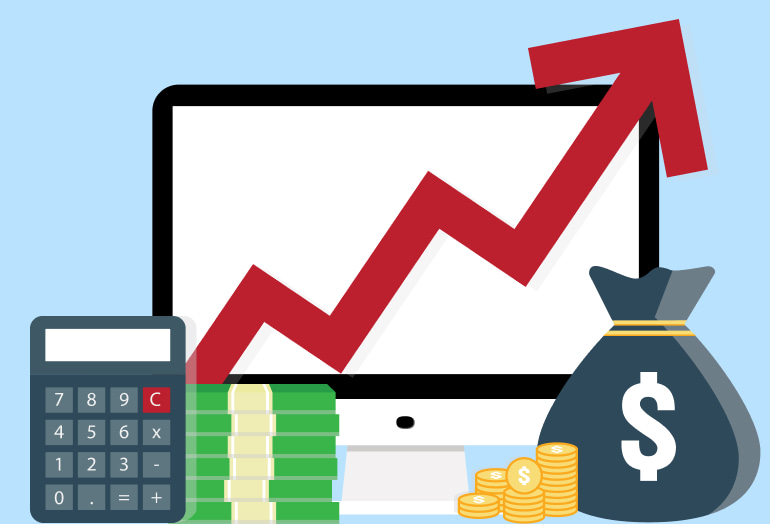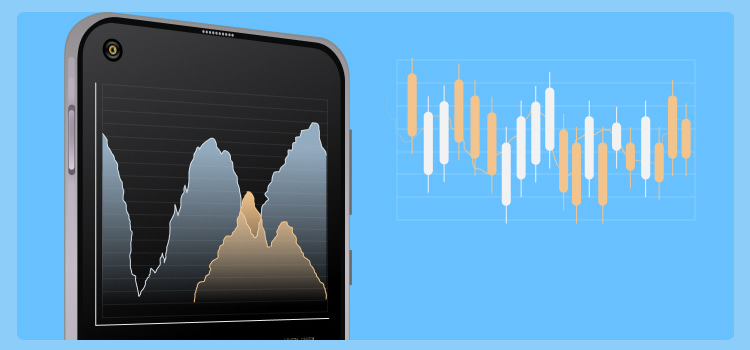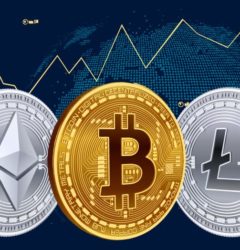20 May

Regardless of the type of economic system, you always want to see a stable picture and, ideally, positive development dynamics. But world practice dictates its terms. The last decades have become a vivid example of this. In such a short period, the world has experienced several waves of economic crisis. This also affected crypto trading. Although cryptocurrency inflation is lower compared to fiat money, it is still present.
Speaking about the general definition of the concept of inflation, this name was given to the process of growth in the cost of goods and services over a certain period. Along with this, wages do not particularly increase, which reduces the purchasing power of the currency unit, the price of which is growing. Regarding the concept of cryptocurrency inflation, some market participants believe that it is fair to compare the classic rise in prices for goods in fiat currency with the increase in the volume of cryptocurrency in circulation.
Causes of inflation in crypto trading
Economists have identified two main causes of inflation:
- Increase in the amount of currency in circulation. A striking example of such a situation can serve as the economic inflation of the 15th century, which occurred in the Western Hemisphere. It was then that conquistadors from Europe seized these lands. The invaders depleted the sources of precious metals (gold and silver), and also confiscated all silver and gold coins in circulation. The stolen funds were redirected to European states, which led to inflation in the region. In crypto trading, inflation is caused by an increase in the number of coins in circulation. The emission of some digital currencies is unlimited. This means that you can issue an infinite number of coins.
- The lack of proposals related to cryptocurrency and crypto trading is now the most popular among miners and holders of digital money in electronic accounts. This leads to an increase in the value of the cryptocurrency as a commodity, which destroys the internal exchange economy. As a result, a parallel rise in prices for other currencies and related services.
How are cryptocurrencies protected from inflation?
Analysts calculated what the cryptocurrency inflation was from 2014 to 2016. Bitcoin and the US dollar were taken as a basis. The indicators show a slowdown in emission, that is, a decrease in inflation. With only 21 million BTC planned to be issued, Bitcoin is considered one of the most stable cryptocurrencies for crypto trading. Simple calculations show that Bitcoin inflation tends to zero due to the emission limit. Against this background, the Bitcoin rate is only growing against the US dollar (the emission of which is not limited), as evidenced by the profitability of this currency pair. The trading signals provider should always take this fact into account.

As for Ethereum, no restrictions have yet been announced. This cryptocurrency is not depreciated relative to fiat currencies and is not an official product of the interaction of money and goods.
If you want to protect your savings from inflation, it makes sense to invest in crypto trading. The limited volumes and the rather high cost of digital money allow only limited groups of people to use such resources. As a consequence, there is an increased demand for a cryptocurrency called new gold. Once upon a time, gold reserves were also a limited asset related to the complexity of the precious metal mining process. Digital coins are also difficult to mine.
Which cryptocurrencies are not subject to inflation?
Crypto coins are often called a kind of refuge from economic instability. Crypto fans are enthusiastically touting digital assets as a way to counter global inflation and depreciation of national currencies. In this case, it is worth thinking about which cryptocurrency to choose for crypto trading and preserving your assets. Elementary analytics have shown that, unfortunately, none of them can save from the depreciation of the national currency.
The reason for this is the arbitrary inflation of supply and demand. Considering the average indicators for the year, we can talk about the futility of fighting inflation with the help of crypto trading. Some crypto inflation is always present. After comparing all crypto coins, investors concluded that the following digital money could be called the most deflationary:
- Bitcoin.
- Ripple.
- Nano.
- EOS.
- Stellar.
- Cardano.
- IOTA.
The most resistant to inflation were named Nano and Stellar.
The most depreciated cryptocurrency is Dash. The price inflation of this currency is now about 84%. Having invested 10 thousand dollars in the purchase of such crypto coins, the crypto investor after the sale will receive only 1600 dollars and will go into a huge minus.
Digital currencies that work based on a unique combination of feature technology, crypto attributes, and stable coins deserve special attention. These include Platincoin (PLC). The price of the coin is constantly increasing. From the advantages, a ladder growth trend can be distinguished. This indicates a possible increase or decrease in value within just one step.
Use the trading signals provider that will help you make the right choice to invest your funds in the chosen cryptocurrency on time.
Pros and cons of inflation

Economists unanimously argue that crypto inflation, like any other, carries negative consequences for the economy. Despite this, several positive aspects and results can be highlighted:
- Stimulation of the state economy. The more money is in circulation, the more often it will be spent. This creates an increased demand, has a positive effect on production processes.
- Reducing unemployment by having to work harder so that economic hardships don’t hit your wallet. It is also associated with the development of the economy by investing more money in different spheres of life.
- Protection from economic danger. In narrow circles, experts call this concept the Paradox of Thrift. The term was coined by John Keynes (the most famous economist of the 20th century). While deflation is observed (a decrease in the overall level of the cost of goods and services), people save and postpone purchases. Inflation works exactly the opposite; it makes you want to spend whatever you have until the cost skyrockets.
And now about the negative consequences of inflation in crypto trading. Despite the government’s concerns about inflation, the problem is deeply affecting vulnerable segments of the population. Inflation affects the elderly, the poor, the disabled, and all working-class members (after all, their incomes fall).
Another inflationary problem is the rise in interest rates. Savings in cryptocurrency are losing their value. When cryptocurrency is accumulated for further resale for education, a decent pension, or elementary passive earnings, any inflationary processes negatively affect purchasing power.
While governments of different countries spend time controlling inflation of their national currencies, Bitcoin and other cryptocurrencies are perceived by investors as a great way to hedge against devastating inflationary consequences. It is due to the limited release of some digital coins. Despite the persistence of this opinion, crypto coins cannot be called deflationary money.





